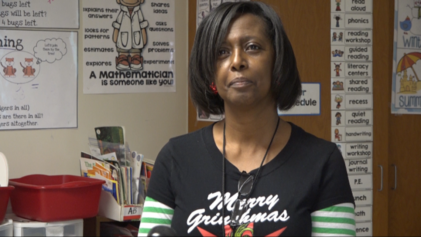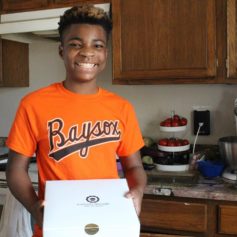Having a Black child carries with it certain concerns — not only concerns for your child’s safety, whether in the streets or when they come in contact with the police, but that they will receive the best education possible. Over-represented in special education classes, Black students are only half as likely as white students to be placed in public school gifted programs.
As reported by U.S. News & World Report, only 2 percent of Black students and 3 percent of Latino students are in gifted-and-talented programs. In contrast, 4 percent of white students and 6 percent of Asian students are enrolled in such classes. Why are the gifted classes mostly white and Asian? A study suggests that many bright children of color are being passed over for advanced programs, and the intervention of Black teachers may provide the key.
Perhaps some would explain the disparity by noting that Black children are poorer with fewer resources and less access to these opportunities, as if this is the end of the story. Others would simply attribute the difference to a so-called low aptitude among Black children, suggesting that Black children aren’t good enough or smart enough.
The study —”Discretion and Disproportionality: Explaining the Underrepresentation of High-Achieving Students of Color in Gifted Programs” — was conducted by two Vanderbilt University researchers and published in the journal AERA Open. The research looked at more than 10,000 elementary school students and found that Black students are 66 percent less likely and Hispanic students are 47 percent less likely than whites to be assigned to gifted programs. However, when accounting for past differences in reading and math scores, the white-Hispanic gap in gifted classes was nearly zero. However, Black students with equally high achievement were steered into advanced programs half as often as whites.
“We document that even among students with high standardized test scores, Black students are less likely to be assigned to gifted services in both math and reading, a pattern that persists when controlling for other background factors, such as health and socioeconomic status, and characteristics of classrooms and schools,” wrote the authors, Jason A. Grissom and Christopher Redding. “Even after conditioning on test scores and other factors, Black students indeed are referred to gifted programs, particularly in reading, at significantly lower rates when taught by non-Black teachers, a concerning result given the relatively low incidence of assignment to own-race teachers among Black students.”
Meanwhile, when Black students had a Black teacher, they were three times more likely to find themselves in a gifted program than when their teacher was white. In fact, the researchers learned that Black students with Black teachers were placed in gifted programs at similar rates to white students with white teachers. And white students are equally placed in such courses, regardless of the race of the teacher.
“This is especially troubling since previous studies have linked participation in gifted programs to improved academic performance, improvements in student motivation and engagement, less overall stress and other positive outcomes,” said Grissom.
Perhaps Black teachers are more likely to see the potential and recognize the talent of their Black students. Further, it is plausible that some Black students may even perform better when they look like their teacher. And it is even possible that Black parents are more comfortable dealing with Black teachers and advocating for their children when the teachers have the same racial background.
In any case, 22 percent of students have a Black teacher, and the findings of the Vanderbilt study underscore the importance of having more African-American educators. In addition, the authors suggest what is known as “universal screening” — testing every single student for potential placement in a gifted program. A September 2015 study of the Broward County, Florida public schools found that universal screening led to an 80 percent increase of Black students in gifted-and-talented programs, and a 130 percent increase of Hispanic students.
Without question, these efforts should be taken in order to overcome a most troubling racial gap.



